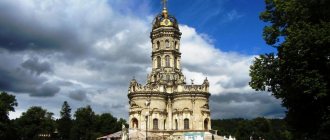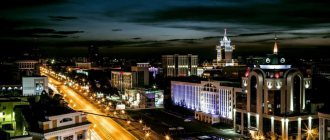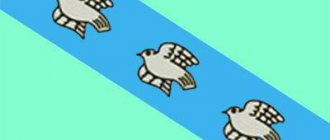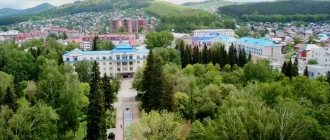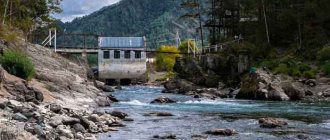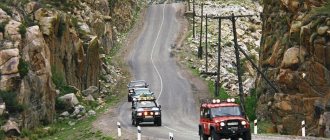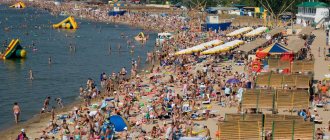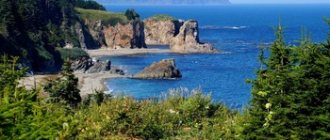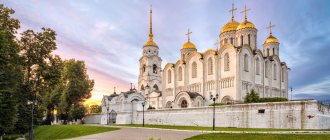The Altai Republic (in Altai, Altai Republic) is a subject of the Russian Federation, part of the Siberian Federal District. The Altai Republic is usually called the Altai Mountains. The administrative center of the region is the city of Gorno-Altaisk. The distance from Gorno-Altaisk to Biysk is about 98 km, to Barnaul – 260 km, to Novosibirsk – 450 km. The administrative-territorial division of the Altai Republic includes one city and 10 districts.
Altai Republic on the map.
Geographical Altai is located in the south of Western Siberia, in the very center of Eurasia. On its territory, which is part of the Russian Federation, there are two administrative regions: the Altai Republic and the Altai Territory. The climate here is sharply continental. The Altai Republic is located in the time zone MSK+4 (UTC+7), covering an area of 92,903 sq. km. and borders:
- In the West, North-West, North - with the Altai Territory.
- In the Northeast - Kemerovo region.
- In the East – the Republic of Tyva, the Republic of Khakassia and.
- In the South - Mongolia (Bayan-Ulgii aimag) and China (Xinjiang Uyghur Autonomous Region).
- In the South-West - Kazakhstan (East Kazakhstan region).
What holiday is it today?
December 16, 2021, Thursday
Today are holidays, events: Events that happened on December 16 in the world, in different years Tomorrow: Day of Strategic Missile Forces Day of Employees of the State Courier Service Memorable date in the military history of Russia: Capture of the Ochakov fortress in 1788
Today is the Orthodox holiday of the Prophet Zephaniah. Reverend Savva of Storozhevsky, Zvenigorod. Martyr Angelis... Tomorrow: Great Martyr Barbara and Martyr Juliania of Iliopolis. Venerable John of Damascus...
Today is a national holiday: Day of World Silence and Silence... Tomorrow: Barbarian Day...
Seasons
Seasons, four periods of the year (spring, summer, autumn and winter) characterized by certain average temperatures. The period during which the Sun passes through one of these sectors is called the season. Spring in the Northern Hemisphere and autumn in the Southern Hemisphere begin when the Sun passes through the initial circle of declination and its right ascension is 0° (vernal equinox). Summer in the Northern Hemisphere and winter in the Southern Hemisphere occur when the sun's right ascension is 90° (summer solstice). Autumn in the Northern Hemisphere and spring in the Southern Hemisphere begin when the sun's right ascension is 180° (autumnal equinox). The beginning of winter in the Northern Hemisphere and summer in the Southern Hemisphere is considered to be the winter solstice, when the direct ascension of the Sun is 270°... Next: Seasons. Russian folk calendar. Monthly words...
Uimon Valley and Multinskie Lakes
Descending further along the Chuysky tract, we find ourselves in the Uimon valley. Local residents, mainly Old Believers or their descendants, believe that Belovodye is located here - the legendary “land of freedom”, an earthly paradise, which is spoken of in Old Slavonic legends. By the way, it was here that Nicholas Roerich came, looking for the mysterious Shambhala in the territory of Southern Siberia and Central Asia. The great explorer, scientist and artist called Altai a sacred place and believed that “the spiritual revival of our Motherland will come from Siberia.”
People come to Uimon because of one more attraction - the Multinsky lakes, scattered along the northern slope of the Katunsky ridge. If you want to experience the effect of “revived photo wallpaper” from the “desktop” of a computer screen, then this is the place for you: the blue-turquoise lakes against the backdrop of snowy peaks are quite real here.
Folk calendar about every day
Every day one season always replaces another and this determines a person’s way of life. In connection with this, a folk calendar was formed in which there were practically no nameless, unmarked days. Every day was special, had its own purpose. All this was determined by climate conditions and astrological phenomena.
A calendar is a system for counting periods of time. The first calendars arose a long time ago, in ancient times, because there was a need to measure time. The word calendar comes from the Latin words caleo - to proclaim and calendarium - debt book. This is due to the fact that in Ancient Rome the beginning of each month was especially proclaimed, and because it was customary to pay debts on the first day of the month. Different peoples counted time differently. Some calendars are based on the changing phases of the moon - lunar calendars; in others - the change of seasons - sunny; in others, the length of the year was coordinated with the change of seasons, and the counting of months was associated with the phases of the Moon. Such calendars are called lunisolar.
In Rus', the calendar was called a monthly calendar. Every day, the month book covered the entire year of peasant life, “describing” day by day, month after month, where each day had its own holidays or weekdays, customs and superstitions, traditions and rituals, natural signs and phenomena. The cyclical nature of the calendar is reminiscent of human life, where spring is youth, summer is heyday, autumn is the time of harvesting fruits (it’s good if there are some, otherwise you can live your life without collecting fruits), winter is the time of wisdom and peace. This cyclicality and rhythm determined the way of life of the farmer. The folk calendar was an agricultural calendar, which was reflected in the names of the months, folk signs, rituals and customs. Even the determination of the timing and duration of the seasons is associated with real climatic conditions. Hence the discrepancy between the names of the months in different areas... Next: Folk calendar...
Shukshin's homeland
Altai, with its unique nature, has powerful energy. The region, shrouded in myths, legends and a very rich historical past, allows you to enjoy its beauty and special charm at any time of the year. Here, at different periods, many world-famous creative personalities - writers, artists - drew strength and inspiration. By the way, Altai is the birthplace of the brilliant Vasily Shukshin. This stunning land always welcomes guests who come here for a dose of true happiness and physical health. Almost nothing here has yet been spoiled by man, and nature responds with gratitude for the caring attitude.
An amazing corner where there is everything - wild rivers, powerful waterfalls, quiet lakes, majestic mountains, mysterious plateaus, endless steppes, forests breathing with fragrant herbs, and the indigenous people - Altaians - representatives of the ancient Turkic ethnic group, who are still faithful to their beliefs and traditions . It is difficult to find a cleaner region not only in Russia, but throughout the entire planet.
{WIDGET}
Fishing calendar for every day
The fishing calendar should not be taken as an absolutely indisputable truth. Fish biting is greatly influenced by a whole range of natural factors, as well as the influence on the nature of man himself. You must not forget that the fish’s bite depends and is determined not only by the calendar dates and biological cycles of their life, reflected in the calendar, but also, no less, by the state of their habitat; the bite also depends on weather conditions: air and water temperatures, cloudiness, wind direction and strength, etc... Next: Fishing calendar...
Entertainment and attractions of Altai
Chuysky tract, Lake Teletskoye, Mountain Charysh, Mountain Kolyvan, Mount Belukha.
Tourists will also be interested in visiting the archaeological and natural monuments of Altai, in terms of the number of which this region is one of the first places in the Russian Federation. More than one thousand burial mounds and ground burial grounds, ancient settlements and ancient settlements, Stone Age cave sites, religious buildings and mine workings for copper and gold have been discovered. Some monuments are of world significance, for example, the Denisov caves, the presence of funerary and religious buildings in the valley of the Sentelek River, a Paleolithic site and settlement near the village of Srostki, a complex of monuments in the Kolyvan region, which preserved traces of the residence of ancient miners and metallurgists. The foothill regions of Altai contain an unsurpassed combination of ancient and ethnographic exoticism, perfectly integrated into the local landscape.
Orthodox calendar about every day
Orthodox calendar: Orthodox, Church and Christian holidays.
The church year is an alternation of weekdays and holidays. On weekdays, a person is called to work “by the sweat of his brow to earn his bread.” Holidays are given in order to feel liberation, to rise above the bustle and routine of the world, to feel involved in the highest of worlds, “where there are no illnesses, sorrows and sighs, but endless life.” Since ancient times, holiday cycles have been associated with the seasons. The pagans associated them with the worship of the forces of nature, the cult of which in the Old Testament was replaced by gratitude to the Creator for the universe. And although the connection between holidays and the seasons has not completely lost its power, since God is present in everything, in the plant and animal world, in human works, it nevertheless faded into the background, giving way to a spiritual foundation built on the Sacred Scriptures. The history of Orthodox holidays dates back to the times of the Old Testament. Each of the Orthodox holidays is dedicated to the remembrance of the most important events in the life of Jesus Christ and the Mother of God, as well as the memory of saints... Next: Orthodox calendar...
Northern ranges of the Altai Mountains
In the north of the Altai Mountains, the Seminsky, Cherginsky and Anuysky ridges stretch parallel to each other. This is the last mountain outpost before the vast plains, an interesting and unique region of Altai.
The Anuya ridge serves as a watershed for the Anui and Peschanaya rivers, its average heights are 1400-1500 m. Between the Peschanaya and Sema rivers lies the Cherginsky ridge with the highest point of Mukur-Cherga (2009 m) in the central part.
The northern part of the Seminsky ridge is the watershed of the Sema and Katun, the highest point is Mount Sarlyk (2506 m). The border between the Altai Territory and the Altai Republic runs through the region, crossing the ridges. The flora of the northern Altai ranges is rich and diverse.
One of the attractions of this region is Denisova Cave. It is located on the bank of Anui, near the village. Black Anuj. The wide entrance to the cave opens right into the mountainside, a few meters above the road. Archaeological research has been carried out here for many years; more than 20 cultural layers dating back to different eras of human development have already been uncovered. The oldest artifacts date back about 300 thousand years; many finds are kept in museums in the Altai region and Siberia.
The oldest human remains in North Asia were discovered in Denisova Cave; their age is 42 thousand years. Archaeological research continues, new sensational discoveries are possible.
15 km from Denisova Cave there is a cascade of waterfalls on the Shinok River, the largest in the Altai Territory. The three-stage waterfall has a total height of about 70 m. This miracle of nature was discovered relatively recently.
Russian folk calendar for every day
The word “sign” comes from the word “notice”, i.e. observe. As a result of observing what happens around a person every day, he accumulates life experience. This knowledge was passed down from generation to generation, carefully preserved and people trusted it as a sacred book. Many signs have come to us from the depths of centuries without losing their knowledge. Each of us is free to choose: to dismiss all this as an absurd superstition or to take a closer look at the signs and take the centuries-old experience of generations more seriously. Most of us, when taking exams, ask them to scold them, boasting about some kind of good fortune or luck, spit so as not to jinx them or knock on wood, take a detour if a black cat crossed the road, are afraid of the number 13 and much more. And who among us does not have lucky things, numbers? Who has never resorted to the help of fate at least once in their life, who has not believed in secrets? It’s as if everything connected with signs is hidden somewhere deep in our subconscious. Often we remember them mechanically, unconsciously, or just as a joke. But, undoubtedly, the signs contain a lot of accurate knowledge and practical wisdom of our ancestors. They cover all the characteristic, often difficult to perceive, natural phenomena. Signs have preserved a lot of what was in old folk holidays and customs; they help predict the weather, grow crops... Next: Folk signs...
Sights of Gorno-Altaisk
There are not many places of interest in the city itself that are worth visiting. Basically, tourists visit Gorno-Altaisk not as the final destination of the trip, but rather as an intermediate point on the way to the unique natural and historical sites of the Altai Mountains. If you have planned to spend several days in Gorno-Altaisk, then take an excursion to the city museum, watch a performance in the drama theater, stroll along the alleys of Victory Park or to the Stone Square to the famous spring. Still, the most interesting sights are not in the city itself, but in its surroundings.
National Museum named after A. Anokhina
National Museum named after
A. Anokhina The museum building has several exhibition halls. The halls dedicated to the ancient history of the Altai Mountains deserve special attention. It is known that the area, so rich in natural gifts, was inhabited millennia BC. Artifacts found during excavations of ancient sites and burial mounds indicate the high development of prehistoric cultures that lived in these areas. The museum's most popular exhibit is the 2,500-year-old mummy of Princess Ukok. It is stored in a special sarcophagus, which maintains a constant temperature and humidity. True, it is unlikely that you will be able to see it, since the mummy is not put on public display. But you can see the restored appearance of the deceased woman.
Also interesting are exhibitions of works by local artists and exhibitions dedicated to the unique local flora and fauna. Visitors can examine in detail an ancient Russian upper room or the traditional decoration of an Altai village. There are cozy sofas for visitors to relax; those who wish can purchase souvenirs.
The cost of an entrance ticket to the museum is 300 rubles (without a guided tour), with a guided tour - 500 rubles. The museum is located at: st. Choros-Gurkina, 46.
Drama Theater named after. P. Kuchiyak
Drama Theater named after.
P. Kuchiyak The repertoire of the drama theater includes plays by Russian classics, productions and concerts dedicated to Altai history and culture, children's performances, and tour performances of famous Russian theater groups. To choose a performance to attend, look at the poster on the official website of the drama theater.
The Drama Theater is located at: Kommunistichesky Avenue, 16.
City Philharmonic
The Philharmonic Society in Gorno-Altaisk was opened only 20 years ago. It was organized on the basis of the disbanded concert and variety bureau. The Philharmonic stage regularly hosts performances by local vocal and instrumental ensembles of modern and folklore, holiday concerts, and performances by invited artists. Try not to miss the concerts of folk throat singing masters. Follow the poster on the official website of the Gorno-Altaisk Philharmonic.
Philharmonic address: Kommunistichesky Avenue, 16.
Ulalinskaya site
Ulalinskaya site
One of the most famous attractions of Gorno-Altaisk is located on the southeastern outskirts of the city. Some believe that this is the oldest evidence of human habitation in northern Asia - the Ulalinskaya site. Archaeological excavations have been carried out at the site since 1961 for 10 years. During this time, several hundred so-called stone tools of the ancient inhabitants were found. The age of the site causes a lot of controversy in scientific circles. Artifacts are believed to be tens or hundreds of thousands of years old. However, all this sounds very doubtful. It seems that the exact age of the Ulalinskaya site remains to be determined. In addition, modern researchers question whether the stones found are tools and not ordinary cobblestones.
Square of stones
Stone Square
An interesting place for walking and relaxing in Gorno-Altaisk is Stone Square. It is located in the city center. The stone compositions in the park are dedicated to the beautiful nature of the Altai Mountains. There are mini images of Belukha Mountain, and a fountain with a waterfall symbolizes Lake Teletskoye. Citizens and guests of the capital of the republic can themselves supplement the park’s collections with stones and intricately twisted driftwood found in the area.
Springs
Springs
with crystal clear water are the pride of Gorno-Altaisk. The area near the most popular springs has been landscaped for recreation for citizens and guests of the city. Near the spring in the Square of Stones there is an interesting sculpture “Alyonushka and Yrystu”, dedicated to the heroes of folk tales of Altai and Russia. The water from the springs is saturated with silver, therefore it has healing properties. In addition, it is appreciated for its pleasant taste.
Holiday calendar, dates and events of the year
All state and professional holidays in Russia, including significant World and International holidays, and other equally interesting holidays and events about every day.
The holiday has always kept pace with the history of mankind. Social time can be divided into three types: everyday life (weekdays), weekends and holidays. Everyday life is a series of practices repeated day after day and every day (work). Weekends are regular breaks from the rush of everyday life. It is believed that on weekends a person should restore his strength after working days. Day off, non-working day. A holiday is a day of celebration established in honor or in memory of someone or something. A day or series of days celebrated by the church in memory of a religious event or saint... Next: Calendar...
Transport of Gorno-Altaisk
Transport of Gorno-Altaisk
In Gorno-Altaisk, buses and minibuses are the only type of public transport. There are no trolleybuses, trams, or even less metro here. True, problems with moving around the city rarely arise. Bus routes are laid in all areas of Gorno-Altaisk, buses and minibuses run regularly at short intervals. The fare is: 18 rubles around the city; 20 rubles in the suburbs.
After 22:00, taxis predominate on city roads. The cost of a taxi fare is 70-100 or more rubles. There are more than 10 transport companies offering taxi services in Gorno-Altaisk. The full list is presented on the city’s official website in the “Activities/Transport/Auto” section.
For the convenience of passengers, the city has a system of paying for public transport with bank cards. Bus conductors offer passengers to pay for travel with one touch to the terminal: with a card, a special key fob or a smartphone. There is no need to enter a PIN code. With this type of payment, the cost of a travel ticket is 50 kopecks lower than when purchasing a ticket in cash.
There is no railway station in the city. The authorities of Gorno-Altaisk have been planning for several years to extend the railway line from Biysk (only 100 km from Gorno-Altaisk), but work in this direction has not yet begun. But since 2011, air traffic with Russian cities has been resumed. The airport is located 6 km from the center. The main direction is Moscow, but there are flights from/to Novosibirsk, Barnaul, Krasnoyarsk, Chelyabinsk. Airport information telephone number5.
Prayer book, Orthodox prayers for every day
Prayer is the most powerful means for healing all illnesses - both physical and mental. Prayers can be laudatory or grateful, petitionary and repentant. If we have offended God, sinned, we must ask Him for forgiveness, that is, repent. Such prayers are called repentant prayers. If everything is fine with us, if we and our loved ones are healthy and prosperous, if we have a place to live, something to wear, something to eat, we must glorify and thank God for this. Such prayers are called praise or thanksgiving. If some misfortune, illness, trouble or need happens, you need to ask God for help. Such prayers are called petitionary... Next: Orthodox prayers...
Features of the Altai Territory
Basic treatment methods at resorts:
- balneology;
- health paths - recreational walking along specially designed routes, or paths of flat and mountainous terrain;
- recreational physical education;
- ozone therapy;
- antler and radon baths;
- phytotherapy;
- inhalation;
- salt caves.
Tourist excursions in the Altai Territory are quite diverse and are largely related to history, archaeological finds and natural heritage. An excellent reason to visit this resort will be event tourism dedicated to traditional celebrations and themed events among local residents. An example is the “Cheese Festival” with tasting or “Shukshin Readings” for fans of the famous writer.
Zodiac, astrological, eastern calendar. Zodiac signs
In ancient times, to establish the calendar, priests used knowledge of the positions of all the planets. Before the reform of Peter 1, the New Year was celebrated on the Day of the Autumn Equinox. On this day, according to ancient legend, the most peaceful treaty was concluded between the Great Race (ancient Slavs) and the Great Dragon (ancient Chinese) and it was approximately 7518 years ago... For the ancient Slavs, the calendar month corresponded to the lunar cycle from new moon to new moon, taking into account such Thus, the relationship of the entire annual cycle with astronomical and natural phenomena. There was no coherent calendar system. The main natural phenomena are still considered to this day to be the days of the solar equinox and solstice - the Slavic holidays Maslenitsa, Kupala, Ovsen and Kolyada. But during the time of Peter 1, all ancient Slavic calendars were abolished and a new Western European calendar from the Nativity of Christ (Julian calendar) was introduced, while the beginning of the calendar was moved to January 1. The Julian calendar (old style) did not take leap days into account and accumulated one extra day every 128 years. After the October Revolution in 1918, the Gregorian calendar (new style) was introduced in Russia, according to which an amendment of 13 days was introduced. The calendar of the ancient Slavs was based on two planets: the Sun and the Moon. And now they don’t use anything at all. The calendar has become static. There is no such thing as the calendar, it turns out, resting on some planet. Nobody even knows about it. There are just some standard numbers, there are months and holidays. The calendar is based on the Sun and Moon. Why is this so? Because these two luminaries influence the Earth. The Earth revolves around the Sun, and the Moon revolves around the Earth. And these two luminaries create the atmosphere on the planet. From here the calendar is built... Next: Astrological calendar...
General information about the Altai Republic
Distinctive features . Altai is also called “Russian Tibet”. Indeed, Altai is part of the single mountain system of Tibet. Here is the highest mountain in Siberia - Mount Belukha (4506 m).
Mount Belukha. Photo by Yarelf (https://fotki.yandex.ru/users/anis-ystu/)
Altai hides many secrets and mysteries. In 1926, Nicholas Roerich visited these places during his Central Asian expedition. They say that one of the goals of the expedition was to search for the legendary Shambhala, or in the Russian version, the country of Belovodye.
Altai is the cradle of the Turkic peoples. Back in the 6th century, the Turkic Khaganate was created. Subsequently, there was a constant struggle for these lands between the Kyrgyz, Mongols, Uyghurs... In the 17th century, these territories became part of the Dzungar Khanate. After the fall of the Khanate, the Altaians became subjects of the Russian crown. At the end of the civil war, the remnants of the white armies arrived in the Altai Mountains from Siberia, which created a serious problem for the Red Commissars, because it is not so easy to fight against guerrilla warfare in the mountains.
Today the Altai Republic is one of the poorest in the Russian Federation. There are many reasons for this, including objective ones. Mountainous terrain, problems with transport, lack of agricultural land - all this has led to the fact that there is practically no industry here, and agriculture is represented by livestock farming.
Most of the population lives in rural areas and is engaged in private farming, traditional for Altaians. Thus, the republic still lives thanks to subsidies from the center, and the officials and the military have settled down best here.
Lake Teletskoe. Photo by starweter (https://fotki.yandex.ru/users/starweter/)
It turns out that the main wealth of Altai is nature. It is this resource that they are now trying to use by making the republic a tourism center. People come here both in summer and winter. There is a lot to see here.
The nature of the republic is carefully protected. Two biosphere reserves have been created here - Katunsky and the largest in Russia - Altaisky, the Sailyugemsky National Park, the Gorno-Altai Botanical Garden, two biological reserves (Sumultinsky and Shavlinsky) and four natural parks: Ukok Quiet Zone, Uch-Enmek, "Ak Cholushpa" and "Belukha".
Geographical location . The Altai Republic is located in the heart of Eurasia, in the Russian part of the Altai Mountains. Here the Siberian taiga, Kazakh steppes and semi-deserts of Mongolia come together in one place. The republic's neighbors are: Altai Territory, the Republics of Tyva and Khakassia, Kemerovo Region. In the south there is a state border with China, Mongolia and Kazakhstan. The republic is part of the Siberian Federal District.
Katun River. Photo by nataly-teplyakov (https://fotki.yandex.ru/users/nataly-teplyakov/)
The relief of Altai consists of mountain ranges separated by river valleys. There are 20,000 rivers, rivulets and streams, as well as 7,000 lakes. The largest rivers are the Katun and Biya, which merge to form the Ob River. Forests make up 47% of the republic's lands, 19% of the territory is agricultural land.
Population. The Altai Republic is one of the most sparsely populated regions of Russia. On the territory of 93 thousand square meters. km, 211 thousand people live here. There are fewer inhabitants than in Altai only in the Jewish Autonomous Region, the Republic of Chukotka and the Magadan Region. Moreover, 71% of the population are residents of rural areas. Another feature of the region in terms of population is its simply huge birth rate - 22.4 people. per 1000 inhabitants, which is twice as high as the mortality rate. It is not surprising that the population of the Altai Republic is growing every year.
55.68% of people living in the republic are Russian by nationality. In second place are the Altaians (35.33%), which includes Telengits, Tubalars, Chelkans and other small ethnic groups of Altai.
Altaians
The structure of the population of the republic at the beginning of 2012 is presented as follows: the share of those who have not yet reached working age - 25.8% of the total population; the share of the working age population is 58.8%; retirement age - 15.3%. The number of youth in the Altai Republic aged 14-29 years is 23.3% of the total population of the republic and 39.6% of the working population.
Crime . The Altai Republic is in second place in the Russian Federation in terms of the number of crimes committed. Twice as many crimes are committed here than in the Rostov or Belgorod regions. One can guess that this is due to the difficult economic situation in the republic - a small number of enterprises, high unemployment. The growth of tourism in this region also provokes criminals who want to make money at the expense of visiting guests. Therefore, tourists and travelers here should be extremely careful.
The unemployment rate in the Altai Republic is very high - 11.58%. There is little work here and it is worth its weight in gold. This is also evidenced by the relatively low average salaries in the republic - 18,246 rubles. The only much better situation is in the sphere of financial activities (51 thousand rubles per month) and in public administration and military security (33 thousand rubles)
The cost of real estate in the Altai Republic is quite low. There are few people who want to come here for permanent residence. And why, one might ask, go to one of the poorest republics of Russia? From those rare advertisements for the sale of apartments that can be found, we learn that a one-room apartment can be bought for 1 million rubles, and for 2.5 million you can even get a three-room apartment.
Gorno-Altaisk from a bird's eye view
The climate of the Altai Republic is moderate continental. Due to the mountainous terrain, there is a wide range of climatic indicators. Summer here is short and hot, and winter is long, cold, with very severe frosts. The average temperature in January is −20°С, in July +15°С. The amount of precipitation depends on the area and can reach up to 1000 mm per year.
Dream books online, interpretation of dreams
A dream book is nothing more than an interpreter of dreams and dreams, a translator of dreams. Since ancient times, people have been using dream books; dreams have always been given great importance, and people have often noticed the prophetic properties of some dreams. The dream book can become your faithful assistant every day and throughout your life, thanks to the dream interpreter you can always make the right decisions, the dream book will help you resist temptations in time, and will warn you against wrong steps and frivolous actions. Further…
Around Altai by car
This amazingly beautiful region, along with stunning views, is fraught with many dangers. When going on a trip to the Altai Mountains, it is necessary to note the most spectacular places:
Monastery of St. John the Evangelist on the island of Patmos
- Patmos is an amazingly beautiful island on the Katun with rocky steep slopes
- The fascinating Seminsky Pass
- Estate-Museum N.K. Roerich
- Delightful Shavlinsky lakes
- The Stone Mushroom tract on the right bank of the Chulyshman
We must not forget about seasonal phenomena when traveling through the Altai Mountains. This region is unique in winter, but dangerous due to frequent avalanches. High levels of meltwater often flood roads in the spring and throughout most of the summer.
Chuysky tract
The highways in Altai cannot be called simple. In mountainous areas, the roads are broken, but the Chuysky tract is considered the best highway in Russia. The road to the Chulyshman River is the most dangerous, as it has a narrow, steep slope. Sometimes the vagaries of nature interfere, when the bright sun suddenly gives way to thick fog. It is better to stay at the nearest hotel and continue your journey when the weather is lenient.
According to experienced tourists, the Chuysky tract is a landmark of the Altai region, bringing sincere delight to anyone who moves along it and has the opportunity to enjoy the surrounding splendor and fabulous landscapes that replace each other.
